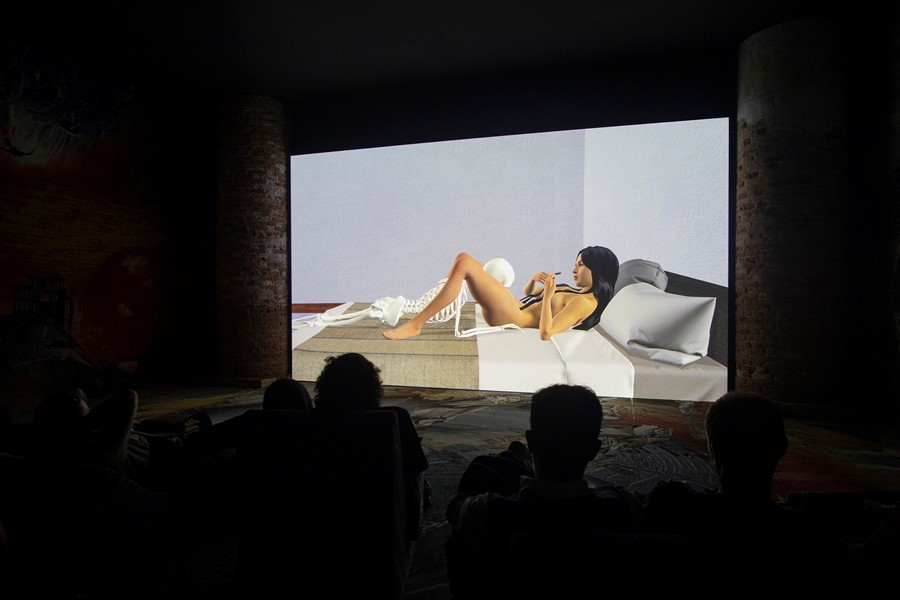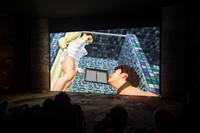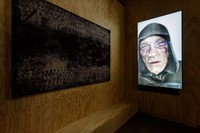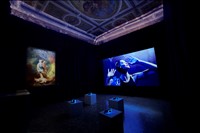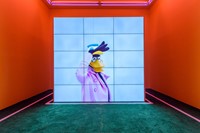Ralph Rugoff’s show May You Live In Interesting Times was all about the present moment. At a biennale where time is always on your mind, it was a hypnotic assault on the senses, writes Sophie Bew
Time is of the essence at the Venice Biennale. During the three press preview days that precede the show’s public opening, a Slovenian curator told me he’d queued for 30 minutes before the Giardini’s front gates opened (one of the biennale’s two main venues – a green garden flanked by 19th-century pavilions). He and many others proceeded to run across the park to form an orderly queue for Laure Prouvost’s much-hyped 24-minute film at the French Pavilion. He waited for a further 30 minutes outside the pavilion – one and a half hours less than the standard two-hour slot. I forced him to quantify its greatness in correlation to the wait. “It’s just amazing,” he said. I attempted to tally that evening’s spritzes against the likelihood of an early wake-up call. Then there’s the umpteen walks to the Arsenale (the other main venue); the extra 15 minutes on top of any Google journey estimate (add 25 in the rain); the wait for Dominique Gonzalez-Foerster’s VR installation Endodrome that could be anywhere from 10 minutes to one hour, depending on your biennale juju.
Ralph Rugoff, the curator of this year’s main exhibition and the director of the Hayward Gallery – and perhaps most importantly, a biennale regular – clearly knows my pain. Calling the journey through the Arsenale’s main passage the “march of death”, he recently described the former rope factory’s 300 metre exhibition space as “like a digestive passage; you enter one end and you’re spat out at the other”. His responding layout thus resembles more a maze than the two lane art fair typical of biennales – as one winds between the works, many enshrined in their own uniquely designed spaces, dark and cool, one is engulfed, absorbed, amazed, and, frankly, exhausted by the whole glorious thing. Though it’s impossible to forget the 30 minute toilet queue, it’s very easy to lose yourself in here, to emerge stumbling into the daylight, blinking.
The curatorial decision to use only living artists in the show, May You Live In Interesting Times – and works made in the last couple of years – similarly breaks the mold of previous seasons. In so doing it fulfils its own generous titular blessing, and comprises a vast survey of the art world at this very moment. The ensemble is so urgent, vibrant, and provoking that the cup appears to runneth over.
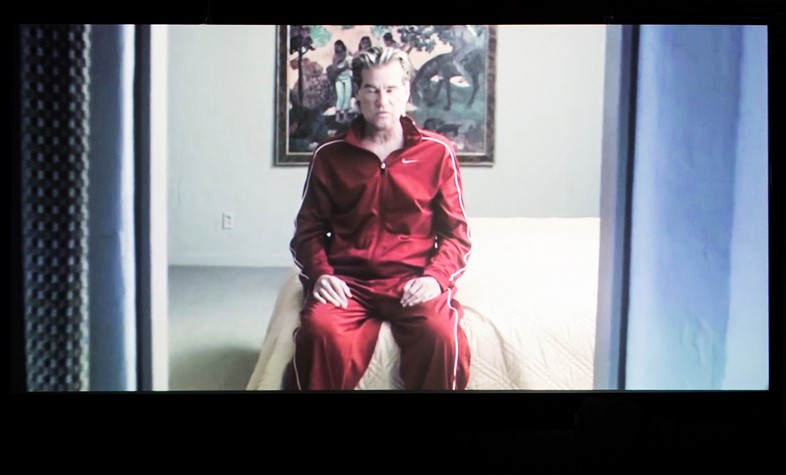
This is in no small part down to the incredible video work both in and outside the main show. The top prize, the Golden Lion for an individual artist, went to Arthur Jafa for his film White Album, which unpicks his complex relationship with whiteness, spanning low-fi YouTube clips espousing white madness and supremacy to tender, Flemish-style portraits of the white people closest to him. A neat yet never-ending loop, the hypnotic montage lulled me into watching more than one circuit of the same film; simultaneously losing track of time yet held furtively in the current climate. The same can be said of Christian Marclay’s 48 War Movies, a film collage that aestheticises violence to the extent it becomes a graphic pattern; Balenciaga collaborator Jon Rafman’s trippy Dream Journal that charts the information overload of a millennial hero (my husband described it as “the entire world’s online culture vomited out into a video”); Alex Da Corte’s bubblegum-hued consumerist nightmare Rubber Pencil Devil; Kahlil Joseph’s Blk News, which refracted today’s constant media stream through a black lens. Bewilderment has the same effect: bamboozling and disgusting viewers, as does Ed Atkins’ work Old Food, that leaves wanderers no choice but to stop and stare at his baby sandwiches and blubbering CGI characters. There’s no coincidence that the works that invite you to stop and sit, that demand your undivided attention amid the sensory overload that is both the biennale and the interesting times in which we live, were the most arresting.
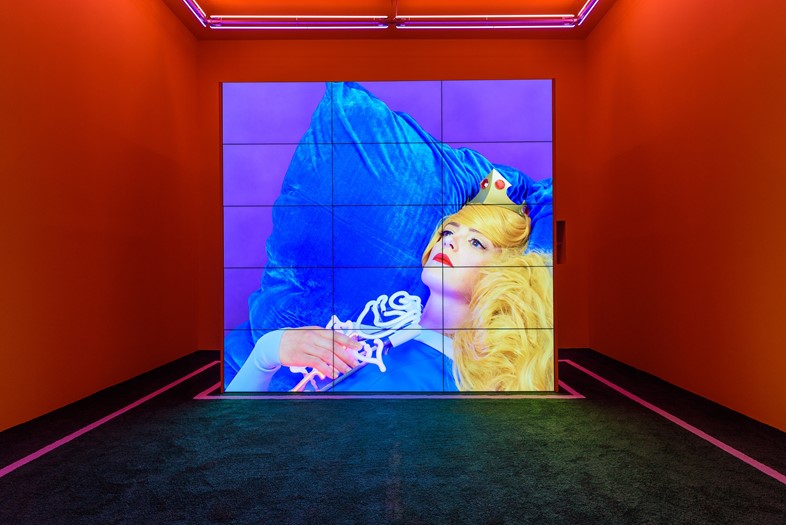
Outside Rugoff’s command, Laure Prouvost’s Deep See Blue Surrounding You at the French pavilion told the story of a band of undocumented travellers, migrating from Paris to Venice, landing in the very pavilion in which you sit. At the Scotland + Venice pavilion, Turner Prize winner Charlotte Prodger’s SAF05, forms a series of geo-tagged memories that redefine the way images shape our emotions. A special mention must go to the Ghana pavilion, designed by architect David Adjaye. As the sub-Saharan country's debut at the biennale, it's evidence of a marked moment in African diaspora art, with stand-out entries by video artist John Akomfrah, and painter Lynette Yiadom-Boakye. At She Persists, an all-woman show curated by HEIST Gallery founder Mashael Al Rushaid and art historian Sona Datta, actor and activist Rose McGowan used Indecision IV (a dance film directed by Tonia Arapovic) as a tool for self-soothing after Harvey Weinstein’s indictment – a physical tour through the politics of today (catch it while it’s on until June 10). Incidentally, the show’s opening panel discussion was fittingly interrupted by a display of pure female anger in the enchanting shouting, wailing and dancing of artist Mithu Sen. Though a staunch non-participator, I was somehow sat on the front row: an invitation, apparently, for the artist to steal my glass of prosecco. A surefire way to bring any audience member into the present moment, as every long sober minute inches past.
The Venice Biennale continues until November 24, 2019.
